Early Career Scientists (ECS)
Around half of all EGU General Assembly participants are Early Career Scientists (ECS). This vital part of the scientific community is what this website is devoted to. Through the ECS representatives you can have a voice across the EGU realm. On this website we keep you up to date and inform you about our goals and communication channels.
News
- Rachel Oien is representing the GM ECS and Gerald Raab is the Co-Rep.
- We are super happy to have many new faces on board (check out the "Who we are") with Emma, Emily, Romano, Emma, Janek, Gabrielle, Ethan, Chiara, Bastien, Marton and Riccardo– A big welcome!
- Sign up for the EGU ECS newsletter to get the latest news!
- We are always welcoming new members. If you want to participate and shape the GM ECS community, get in touch with us!
General
- Communication on BlueSky, Facebook, the GM Blog
EGU-related events, scientific highlights, job advertisements and so on. Anything you pass over to us gets forwarded to a broader audience. Given the size and popularity of geomorphology, we have a growing BlueSky and 2000+ Facebook likes.
Posting on this blog is open to anyone who’s willing to write down interesting content, and there is room to increase the frequency of blog posts, so you should not hesitate to contact the editors! Our 2024/25 theme is ‘Highlits: Research, Person or Fieldwork'. Please share your exciting opportunities, landscapes and research! - At EGU 2025, Short Courses and other non-scientific sessions. This year we were convening the following events:
- SC 1.1: How to navigate EGU: tips and tricks
- SC 1.2: How to get involved with EGU
- SC 1.3: The LGBT Pride group at EGU: Current progress and challenges for LGBT people in the Earth system sciences, and ideas for how to overcome them
- SC 1.8: Academic Activism for Urgent Climate Action: How to get started ?
- SC 1.9: Being a scientist in the age of AI: Navigating tools, ethics, and challenges
- SC 2.12: Meet the Editors (1 & 2): How to write, revise and publish your manuscript
- SC 2.13: Meet the Editors (3): How to peer-review – Fundamentals & EGU’s model
- SC 2.1: Surviving in Academia as a Parent
- SC 2.10: European Research Council (ERC) Funding Opportunities
- SC 3.4: Geodiversity, geoheritage and geoconservation: tools to achieve a more sustainable world
- SC 3.2: Intercultural Science Communication: overcoming barriers for effective engagement
- SC 2.11: Elevate your Pitch: Developing Engaging Scientific Presentations
- SC 3.10: Geodesy 101: A brief introduction for non-geodesists
- SC 3.11: Geology 101: An introduction for non-geologists
- SC 3.3: Navigating Transdisciplinary Research: Tools and Strategies for Early Career Scientists and Practitioners
- SC 3.17: Good programming practices for scientists. Essential rules for efficient programming
- SC 3.16: Sustainable Research Software (onsite only)
- SC 3.18: Introduction to Python for Earth System Sciences
- SC 3.7: DataViz: Visualise your data effectively and avoid common pitfalls
- SC 1.5: Your guide to science diplomacy
- SC 4.1: No More IDW: Geostatistics and Stochastic Methods to Unleash the Power of Your Spatial Data on Unstructured Meshes
- SC 4.3: Environmental DNA (eDNA) metabarcoding for geosciences
- SC 4.5: Using distributed databases in your citizen science research
- SC 4.2: From point cloud to grains with CloudCompare: classification (3DMASC), segmentation and features extraction (G3Point).
- SC 4.9 : Databases for permafrost and rock glacier monitoring
- SC 4.15: Understanding, using and creating open data with OpenStreetMap
- SC 4.17 : Taming Big Earth Data with cloud-based processing on WEkEO
- Organisation of Networking or Pop-Up events.
- GM Division Meet & Greet Join us for an informal meet-up with members of the Geomorphology Division! This is a great chance to break the ice, connect with fellow researchers, and chat with GM Division officers and ECS representatives. Come along to learn more about the division and explore how you can get involved in the EGU community.
- Location: EGU networking zone – next to EGU booth (Hall X2)
- Wed, 30 Apr, 10:45–12:15 CEST
- Geomorphology (GM) Division Early Career Networking Lunch Join us for an informal lunchtime meet-up — just bring your own food and drink and come along! It’s a great opportunity to connect with fellow ECSs, chat about ideas, and build new collaborations in a relaxed setting. Senior scientists are very welcome to join and support the community!
- Location: We will meet at the Front entrance (by 12:35) and walk to Donaupark.
- Wed, 30 Apr, 12:30–13:45 CEST
- Celebrating 20 Years of Geomorphology (GM Division Social) Come celebrate two decades of Geomorphology with us! Let’s raise a glass to 20 years of shaping landscapes — and the field!
- Venue: Beer Paradise Judenplatz 1, 1010 Wien, Austria
- Wed, 30 Apr, 20:00–23:30 CEST
- GM Division Meet & Greet Join us for an informal meet-up with members of the Geomorphology Division! This is a great chance to break the ice, connect with fellow researchers, and chat with GM Division officers and ECS representatives. Come along to learn more about the division and explore how you can get involved in the EGU community.
- Involvement in decisions at division level. Rachel joins the discussions with our Division President (Kristen Cook) and the rest of the GM non-ECS committee, where decisions about session mergers and outstanding ECS awards are taken.
Who we are
Rachel P Oien
Rachel is a teaching fellow at Durham University, UK, in physical geography. As a quantitative geomorphologist, she focuses on alpine geomorphology and palaeoglaciology throughout the Quaternary, in the Arctic and High Mountain areas worldwide. Her research investigates the relationship between landscape evolution, mass balance and climate in palaeo and modern mountain glaciers. She has attended EGU in 2018, 2020, 2022, 2023 and 2024. She is highly motivated to serve the community as the GM ECS Rep. Find her on BlueSky @racheloien.bsky.social

Gerald Raab
Gerald is a geomorphology driven geologist, currently working as a Postdoctoral Fellow at Dalhousie University in Halifax, Canada. In his research he uses geochronological and geochemical techniques to determine surface processes, mainly erosion and topographic evolution. Gerald benefitted from EGU’s annual meetings over the past decade. He aims to represent the diverse voices of fellow young geomorphologists in the Division’s decision-making processes and activities. He is looking very much forward to serve the community well. Tweet him @gr_science
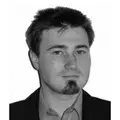
Romano Clementucci
Romano is a tectonic geomorphologist, currently working as a Postdoctoral Fellow at ETH Zurich, Switzerland. His research addresses questions including how geomorphic systems record geological signals, such as tectonics, uplift and climate, and which are the main controlling factors on the development of topography in terrestrial and marine environments. He has been an active and motivated EGU member since 2019.
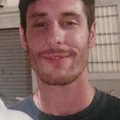
Janek Walk
Janek is a postdoc at the Julius Maximilian University of Würzburg with a research focus on the processes and evolution of dryland geomorphology and soils – largely based on field studies in North Chile, Northwest Namibia and Central Asia. Outside of drylands, he further works on the human impact on fluvial systems in Central Europe. For these purposes, he integrates space- and UAS-borne remote sensing, GIS analyses, geomorphometry, numerical dating, and sedimentological data. As a regular EGU attendee since 2019, he is looking forward to engaging in the GM ECS community.
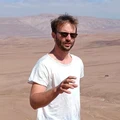
Emma Lodes
Emma Lodes is a geomorphologist and postdoctoral scholar at Arizona State University in Tempe, Arizona. Her current research involves understanding how precipitation and thresholds have influenced the history of canyon incision in Hawaii using a combination of cosmogenic radionuclide analysis, field measurements and modelling, and is generally interested in the effects of climate and tectonics on landscape evolution, river incision and sediment transport. She is excited to be a part of the ECS team and contribute to the European Geomorphology community!
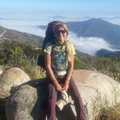
Emily Bamber
Originally from North Wales, Emily Bamber is a Research Fellow at the University of Cambridge, UK. Emily's research addresses questions related to transverse drainage and planetary habitability; specifically the past evolution of impact crater lakes on Mars, Earth, and elsewhere, with satellite observations, landscape modelling, fieldwork and cosmogenic nuclides. She is looking forward to sharing geomorphology community updates and research via the EGU GM division blog!

Ethan Lee
Ethan is a postdoc at the University of Sheffield, working on a NERC project focusing on water
security across the Andean Mountain range. He is the glacial modeller understanding how much ice is left across the region at 2150 AD, which shall aid in understanding water resources in regions that rely on glacial melt and runoff. His research has previously focused on the use of geomorphology and cosmogenic radionuclides to date and understand glacial advances in the Himalayas (MSc) and Tropical Andes (PhD). His first EGU was online in 2021, but in person in 2024. He joins the team, aiming to contribute to the EGU GM community.

Pál Márton
Márton is a final-year PhD student in geosciences and GIS at the ELTE Eötvös Loránd University, Budapest, Hungary, and the secretary of the Hungarian ProGEO group. His research works focus on quantitative geodiversity assessment and geosite evaluations – following the standards of the UN Sustainable Development Goals and UNESCO Global Geoparks. Additionally, he has a great interest in UAV-based remote sensing and 3D models in geosciences. He hopes to serve the group of young researchers through the EGU.

Chiara Bazzucchi
Chiara is a final-year PhD student in Earth Sciences at the University of Roma Tre. Her research focuses on tectonic geomorphology, landscape evolution, and the use of cosmogenic nuclides, with an emphasis on in situ ¹0Be and meteoric ¹0Be/9Be. She is excited to join the GM team and looks forward to actively contributing to the EGU community and its scientific endeavours.
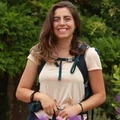
Gabrielle Vance
Gabrielle is a doctoral student in Earth Sciences at ETH Zurich in Switzerland. She researches how landscape evolution, particularly tectonically driven drainage reorganization, influences riverine biodiversity, and values education and outreach.
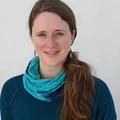
Riccardo Reitano
Riccardo is a tectonic geomorphologist at the University of Rome, Roma Tre. He is currently a postdoc researcher and lecturer. His work focuses on understanding the interaction between tectonics and surface processes. For doing this, he uses both analogue and numerical modelling, trying to catch the evolution of landscapes as a function of this continuous feedback. He is looking forward to contributing to the GM Team and to the EGU community.
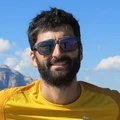
What we do
- Promote social events during EGU. If you have an event that you want to promote or join already established events do not hesitate to get in contact with us. For example, throughout the last years, national young geomorphologists networks (Junge Geomorphologen, BGS) have established a zero-hierarchy social event during the General Assembly. This event aims at bringing together young and not any more so young researchers with geomorphology as shared background. The event typically takes place at the cosy Mozart Stüberl, which tends to be fully crowded with a buzzing international crowd. See the Hot News from time to time to see the upcoming scheduling of the event.
- Bridging divisions at and beyond EGU. Geomorphology is an integrative discipline, heavily reaching out to neighbouring and more remote disciplines. As such, it is our goal to facilitate this nature of geomorphology also in the realm of the EGU. We do this by coordinating joint workshops, co-organised sessions, and interactions with other Divisions’ ECS representatives.
- Conveying ECS’ needs to the respective targets. It is our immediate role to serve you ECS in linking you with the partners adequate to address your questions and ideas.
- Building a European-wide network of geomorphology enthusiasts. There is a wealth of nationally organised networks of young scientists with a geomorphic background. We see it as essential to bring together these networks and connect them at European level. We foster joint networking events, cooperatively organised EGU-wide workshops and mutually invitations to the respective national group meetings.
Channels of outreach
- We contribute to the EGU-Blog, run by Sabine (https://blogs.egu.eu/divisions/gm/author/kraushaar/) and Jan (https://blogs.egu.eu/divisions/gm/author/blothe/) through, e.g., interviews by GM ECS. We have started this by posting the interviews of the GM division president candidates before the recent election, and several more are in the making.
- The GM division BlueSky account (https://bsky.app/profile/egu-gm.bsky.social) is active with an audience that is growing every week. We encourage continued engagement with the account, so please get in touch by tagging us (or contacting Edwin Baynes) in your posts if there is anything you would like to share with the GM and ECS communities.
- Mailing list
The GM ECS group has a mailing list, which can be used for communicating and sharing essential information. It is a moderated list, and responsibilities are hosted above the ECS Representative level. If you are not yet included in this mailing list and want to become part of it, let us know. If you wish to circulate your contents via this mailing list, please send it to ecs-gm@egu.eu, where it will be checked for validity and forwarded to the mailing list coordinator. Thus, include a processing window of a few days before your message will be made available to the envisioned audience.
